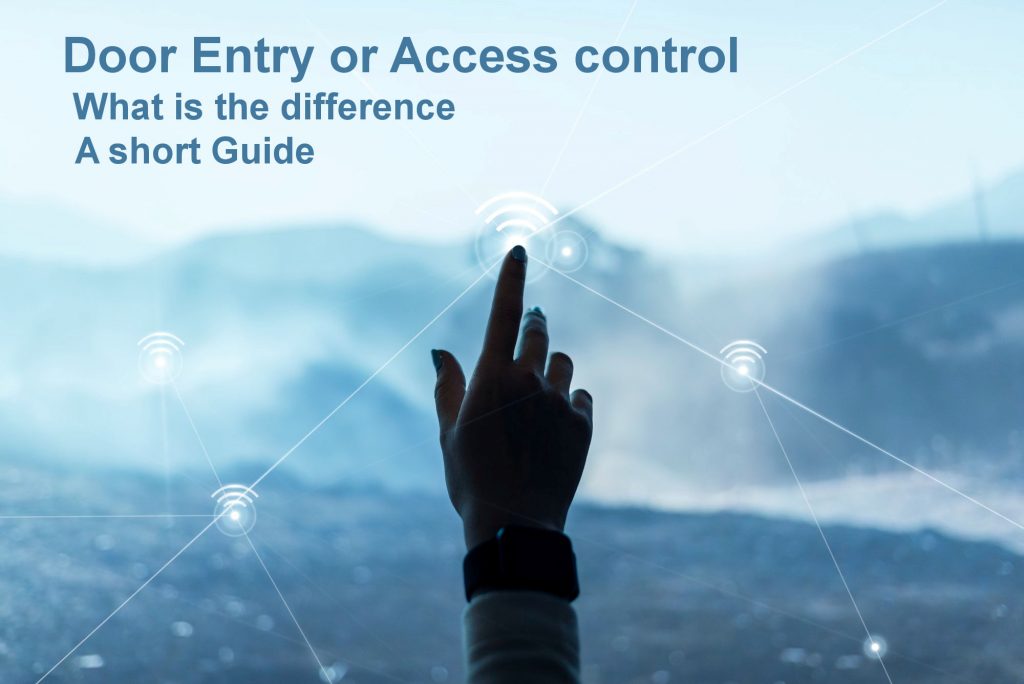Understanding the Difference: Door Entry vs. Access Control
Introduction:
Door entry and access control systems are critical components of modern security infrastructure for both residential and commercial spaces. While these terms are often used interchangeably, it’s essential to understand the differences between them. Below we aim to clarify the distinctions between door entry and access control systems.
Door Entry Systems:
Door entry systems primarily focus on preventing casual access to a space managing and controlling who enters that space. These systems are designed to facilitate communication and entry permissions at the entrance point, such as a front door or gate. Key features of door entry systems include:
- Stand alone: Typically fitted to a single door or entry point in isolation with no connection to other doors or entry points and with no central software.
- Intercom Communication: Door entry systems often incorporate intercoms that allow communication between a visitor and the occupant before granting access.
- Audio and Video Verification: These systems may include audio or video verification mechanisms, enabling occupants to visually or audibly confirm the identity of the person seeking entry.
- Door Release Mechanisms: In most cases, door entry systems may include mechanisms to remotely release the door lock, allowing authorised individuals to enter.
- Visitor Management: Door entry systems are typically designed to manage visitors efficiently, providing a secure means for occupants to grant or deny access. And will normally include an option for pre authorised employees or residents to gain entry directly.
Access Control Systems:
Access control systems, on the other hand, encompass a broader range of security measures beyond just managing entry points. Access control focuses on regulating and monitoring access to various areas within a facility. Key features of access control systems include:
- RFID Readers, Face and Fingerprint Biometrics, or Key Fobs: Access control systems often employ advanced authentication methods (also known as factors) such as RFID card readers, biometrics, or key fobs to grant access to authorised individuals. These factors can be combined to increase the security level if required such as requiring users to identify with an RFID card then also by Face recognition before being granted access.
- User Permissions and Restrictions: These systems allow administrators to define specific access permissions for different individuals or groups, restricting entry to certain areas based on roles or clearance levels.
- Audit Trails: Access control systems maintain detailed logs or audit trails, recording who accessed a particular area, and when, providing valuable information for security and compliance purposes.
- Integration with Security Systems: Access control systems can integrate with other security systems, such as surveillance cameras or Fire alarms, enhancing overall security measures and building safety.
Conclusion:
While door entry and access control systems share the common goal of enhancing security, the distinction lies in their specific functionalities. Door entry systems primarily manage access at specific entry points, emphasising communication and entry permissions. In contrast, access control systems provide a comprehensive solution for regulating and monitoring access throughout an entire facility, utilising advanced authentication methods and offering detailed audit capabilities.
Understanding the differences between door entry and access control systems is crucial for organisations seeking to implement effective security measures tailored to their specific needs and requirements.
For further information or to discuss your access control or door entry contact us on 01252 544457 or email [email protected].

